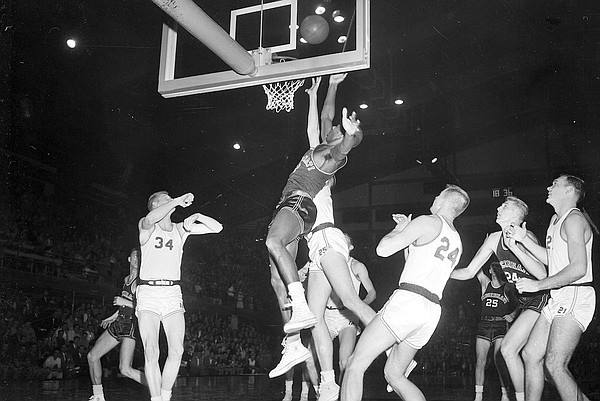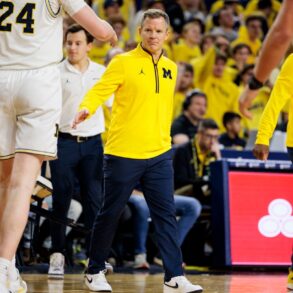
If you are a Razorback basketball fan or a duck hunter, read Larry Grisham’s obituary at Emerson Funeral Home in Jonesboro.
You’d want to have Grisham’s life. It was incredible — from his roots as a college basketball player, to family, outdoor sport, business and conservation.
There is a slide show of photos. Along with great family shots, near the end there are some pictures of classic journals of duck hunting trips with the names of Arkansas legends. Some group hunting shots are there, too.
My connection to Grisham was distant, but dozens of friends had a tight bond with Grisham. From the owners of Two Rivers Fly Shop in Norfork, to my college roommates and my suite mate in the early days of Hawgs Illustrated, they all loved and respected Grisham. The latter was Steve Wright, the great outdoor writer who penned several amazing books, with plenty of references to Grisham.
Grisham died May 7. His life was celebrated last Thursday in Jonesboro, so Norfork fly shop owner Dru Zametto asked me to open and close so she could attend. Her late husband Dominic was among the many guides Grisham used to fly fish on the White and Norfork rivers.
“Best man ever to come through our town and shop,” Zametto said. “He was an amazing human. Dominic and I loved him. He did so much for us. He’s the reason the shop is here.”
Wright, who authored Arkansas Duck Hunting Almanac with Steve Bowman, wrote an awesome chapter on Grisham that details the origin of the Arkansas Game & Fish Commission Duck Stamp. Grisham is clearly Mr. Duck Stamp. It was his idea and the best fundraiser in the history of any conservation program in any state.
“It was the premier [stamp] program in America,” said Hal Hunnicutt, AGFC Commissioner from 1991-94. “Larry was not an AGFC employee, but he did as much or more than any AGFC employee or commissioner for conservation. The leadership at Ducks Unlimited raved about him.”
Brian Fulkerson of Jonesboro was among Grisham’s best friends. He recalls a dove hunt near Batesville when he was 12 that included Grisham and “three or four” AGFC commissioners.
“That was the day Larry presented the duck stamp idea to AGFC,” Fulkerson said. “I’ll never forget hearing that conversation and what it became.”
It was also the start of six decades of hunting with Grisham that included sharing memberships at the famed farm owned by Leonard Sitzer near Weiner. It’s the setting for much of the art work that became AGFC duck stamps.
“I’d say the majority of the stamps depicted settings in either the Chicago or Walker holes there,” Fulkerson said. “I saw him bring in the world’s best outdoor artists to hunt there and produce the art work.”
The series of duck stamps began in 1981 with artist Le LeBlanc’s scene with “Bayou Meto Mallards.” Famed artists David Maas and Maynard Reece were also commissioned, often to do scenes from the Sitzer property.
Grisham’s interview with Wright is priceless. Obviously, Grisham was a big Razorback basketball fan, but he hunted every day of the duck season for decades, ignoring his many successful businesses and the Razorbacks until the season closed.
“There is nowhere else I’d rather be [than duck hunting],” Grisham said. “Business just takes a back seat to duck hunting. Most people around here just mark off the mornings [on their calendar] and go duck hunting.”
Grisham would not be classified as a star Razorback player, but he lettered two years for legendary coach Glen Rose and played in one of the first big-time Arkansas games, a matchup with Cincinnati great Oscar Robertson at the NCAA Tournament. The Hogs had won the 1958 Southwest Conference title in Grisham’s senior year.
Robertson scored 56 points — almost outscoring the outmanned Arkansas squad by himself — in a 97-62 victory. Grisham missed all 6 of his field goal attempts in that game but did make his only free throw.
Grisham, a Jonesboro product, had played two years for coach Henry Iba at Oklahoma A&M before transferring to Arkansas. He was a teammate of Eddie Sutton at A&M. At 88, Grisham was among the oldest living Razorback basketball players.
Everything Grisham tried in business was successful. That includes several clothing stores manned by family in West Plains, Mo., and Jonesboro, an outdoor art and framing business, ventures at airports and selling airplanes, banking and telecommunications.
But Grisham always kept conservation — both in duck and turkey hunting — front and center. He concentrated more in turkey hunting than in the duck woods later in life. He had considerable property near Dalton in Randolph County north of Jonesboro.
“His property was next to my family land,” Fulkerson said. “He bought his land and kept adding to it to expand our turkey hunting. Just like duck hunting, it was always about the resources [in conservation].”
Hunnicutt recalls many great duck hunts with Grisham near Weiner.
“It was usually over in 15 minutes with limits of greenhead [mallards],” Hunnicutt said. “His emphasis on conservation was evident. If you shot a hen, there was a box on a tree and you had to put $5 in it.”
Wright was Grisham’s guest on a Texas turkey hunt. Grisham flew to Fayetteville in a King Air for the ride.
“That was in a different time, before 9/11,” Wright said. “I walked through the terminal at Drake Field in Fayetteville wearing camo with a shotgun on my shoulder. Larry and I laughed about that.”
Things have changed, including the duck hunting in Arkansas. There are fewer ducks now. There was a time when it was easily the world’s best for flooded timber hunting. Grisham highlighted that in Wright’s book interview and that’s mainly what the duck stamp art contained.
“For many people, duck hunting in Arkansas is like playing golf at Augusta National,” Grisham said. “Hunting ducks in Arkansas’ flooded timber is something you name-drop. We have people all over the country who want Arkansas duck stamps.
“On a per capita basis, the Arkansas state duck stamp raised more money than any other state.”
Grisham’s reach was massive. He was considered one of our state’s greatest ambassadors. He knew why. At the conclusion of his funeral in Jonesboro, the Arkansas Fight Song was played, a fitting tribute to a great Razorback.
“The scenes [in the duck stamp] sell Arkansas duck hunting,” Grisham said. “It’s a nice image of the state.”
So was the man behind the Arkansas duck stamp.
This post was originally published on this site be sure to check out more of their content.







